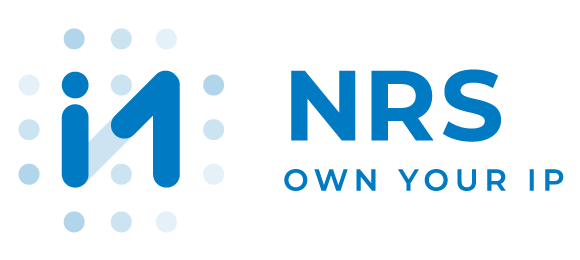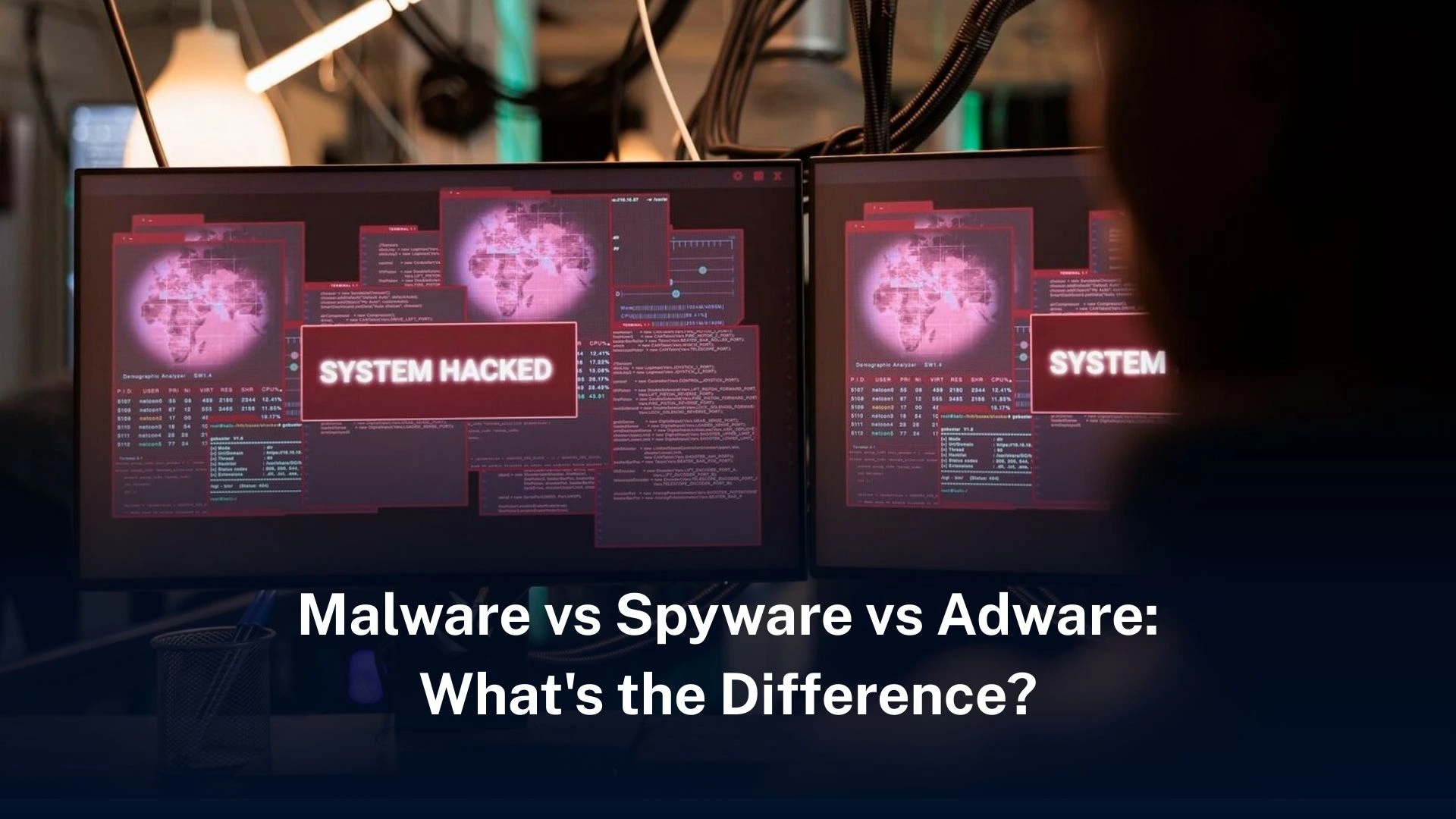Malware, spyware, and adware present unique challenges to our online security and privacy. Grasping their differences is essential for effective protection.
Malware is a comprehensive term that includes different forms of malicious software, such as viruses and ransomware.
Spyware and adware represent particular categories of malware, where spyware is primarily concerned with data theft, while adware is focused on presenting unsolicited advertisements.
The world of Malware
Malware, an abbreviation for malicious software, refers to a broad category of software intended to interfere with, harm, or obtain unauthorized access to computer systems. It manifests in various forms, including viruses, worms, Trojans, and ransomware.
As stated by cybersecurity specialist Dr. Steven Bellovin from Columbia University, “Malware acts as a digital intruder, infiltrating your system and wreaking havoc in multiple ways.” It has the capability to erase files, damage data, establish backdoors for cybercriminals, and even encrypt files for ransom.
Types of Malware
Viruses
Viruses are self-replicating programs that propagate by infecting other files or applications. They can inflict considerable harm on a system, such as deleting files, corrupting data, and potentially making the system inoperable.Viruses typically disseminate through email attachments, compromised softwar downloads, and portable storage devices like USB drives. For instance, the ILOVEYOU virus in 2000 infected millions of computers globally by masquerading as a love letter in an email attachment. The virus spread swiftly due to its use of social engineering tactics to deceive users into opening the attachment, which subsequently executed the harmful code.
Worms
Much like viruses, worms can swiftly disseminate throughout networks. Nevertheless, they do not need user engagement to spread. Worms take advantage of weaknesses in software and operating systems to infect devices. A prominent example is the Stuxnet worm, which aimed at industrial control systems and inflicted considerable harm on Iran’s nuclear initiative. Stuxnet was especially perilous as it was engineered to propagate via USB drives, complicating detection and containment.
Trojans
Named after the Trojan Horse, these programs seem legitimate while concealing malicious intentions. They frequently grant attackers backdoor access to compromised systems. Trojans can be utilized to extract sensitive data, surveil user activities, or even seize control of the device. For instance, the Zeus Trojan was specifically crafted to pilfer banking information, resulting in considerable financial losses for its victims. The Zeus Trojan successfully captured users’ login credentials and facilitated unauthorized fund transfers from their accounts.
Ransomware
This category of malware encrypts files and requires payment for their decryption. In recent years, it has emerged as a considerable threat, affecting both individuals and organizations. Ransomware incidents can be catastrophic, as they frequently prevent users from accessing their systems until a ransom is paid. The WannaCry ransomware incident in 2017 impacted more than 200,000 computers in 150 countries, underscoring the necessity of maintaining updated software.
WannaCry took advantage of a flaw in Microsoft’s Windows operating system, which had been patched several months prior. Nevertheless, numerous users had not yet implemented the update, rendering their systems susceptible to the attack.
How Malware spreads
Malware can propagate through multiple channels, such as email attachments, harmful websites, compromised software downloads, and even via physical devices like USB drives. Cybercriminals frequently employ social engineering tactics to deceive individuals into downloading and installing malware. For instance, phishing emails may include links to harmful websites or attachments that, when accessed, install malware on the user’s device.
As reported by Symantec, phishing attacks are growing more advanced, with perpetrators utilizing persuasive email templates and URLs to mislead users.
Real-world examples
Malware attacks have inflicted considerable harm in the past. For instance, the WannaCry ransomware incident in 2017 impacted more than 200,000 computers in 150 countries. This attack took advantage of a flaw in Microsoft’s Windows operating system, underscoring the necessity of keeping software current.
Another significant case is the Mirai botnet, which focused on Internet of Things (IoT) devices and led to extensive internet disruptions. Mirai managed to compromise thousands of IoT devices, including routers and cameras, by leveraging weak passwords and default login credentials.
Detection and removal
Detecting malware can be challenging, but there are tools available to help. Antivirus software is essential for identifying and eliminating malware. Regularly updating your security software and performing scans can help identify and remove threats. Additionally, using firewalls and other security measures can help prevent malware from entering your system in the first place. According to Dr. Bellovin, “Regularly updating your antivirus software and performing full system scans are crucial steps in detecting and removing malware.”
Prevention strategies
Preventing malware infections requires a proactive approach. Keeping software and operating systems up to date, using strong passwords, and being cautious of email attachments and links are crucial steps. Additionally, using security software and regularly scanning systems for threats can help prevent infections. Dr. Bellovin advises, “Staying informed about the latest threats and regularly updating your security measures are key to protecting your digital life.”
Spyware: The silent threat
Spyware is a specific type of malware that operates stealthily. Its primary purpose is to gather information about users without their knowledge or consent. It can track browsing habits, record keystrokes, capture screenshots, and even access personal files. Dr. Bellovin warns, “Spyware is like a digital spy, silently watching your every move and sending sensitive information to third parties.” Unlike malware, which often causes noticeable damage, spyware focuses on data collection and can be harder to detect.
How Spyware works
Spyware typically installs itself on a user’s device without their knowledge. It can be bundled with other software, downloaded from malicious websites, or installed through phishing attacks. Once installed, it runs in the background, collecting data and transmitting it to a remote server. For example, some spyware programs can monitor keystrokes to steal passwords and other sensitive information. According to Symantec, spyware can also modify browser settings, redirect users to malicious websites, and display unwanted advertisements.
Impact of Spyware
The impact of spyware can be severe. It can lead to identity theft, financial fraud, and loss of privacy. According to a report by Symantec, spyware can also significantly slow down a device’s performance. In addition to these risks, spyware can also cause users to experience unwanted pop-up ads and changes to their browser settings. For example, the DarkHotel spyware targeted business travellers by infecting their devices through hotel Wi-Fi networks. The spyware was able to steal sensitive information, such as login credentials and corporate data, from infected devices.
Detection and removal
Detecting spyware can be challenging, but there are tools available to help. Anti-spyware programs are specifically designed to detect and remove these stealthy threats. Regularly updating your security software and performing scans can help identify and eliminate spyware. Additionally, using a firewall and monitoring network activity can help detect suspicious behaviour. According to Dr. Bellovin, “Using a combination of anti-spyware software and regular system scans can help identify and remove spyware from your device.”
Real-world examples
Spyware incidents have also been prevalent, with cases like the Zeus Trojan, which targeted banking information. The Zeus Trojan was able to steal sensitive information from infected devices, leading to significant financial losses for victims. Another example is the SpyEye Trojan, which was designed to steal banking credentials and other sensitive information. SpyEye was particularly dangerous because it could bypass two-factor authentication and transfer funds from victims’ accounts.
Prevention strategies
Preventing spyware infections requires a proactive approach. Keeping software and operating systems up to date, using strong passwords, and being cautious of email attachments and links are crucial steps. Additionally, using security software and regularly scanning systems for threats can help prevent infections. Dr. Bellovin advises, “Staying informed about the latest threats and regularly updating your security measures are key to protecting your digital life.”
Adware: More than just annoying Ads
Adware is another form of malware that primarily displays unwanted advertisements. While it may seem less harmful than spyware, it can still cause significant issues. Adware can slow down device performance, consume network bandwidth, and track users’ browsing habits. According to Cisco, adware can sometimes contain more severe threats like Trojans and spyware. Dr. Bellovin explains, “Adware might seem like just a nuisance, but it can open the door to more serious threats if not properly managed.”
How Adware spreads
Adware often spreads through deceptive means. It can be bundled with free software, downloaded unknowingly by users, or installed through malicious websites. Users may also inadvertently install adware by clicking on pop-up ads or downloading software from untrusted sources. For example, many free software programs come with bundled adware that users may not be aware of. According to a report by MalwareFox, adware is often bundled with software from third-party download sites, which can make it difficult for users to avoid.
Impact of Adware
While adware is generally less harmful than malware or spyware, it can still cause significant frustration. It can slow down device performance, consume network bandwidth, and display intrusive advertisements. According to a report by MalwareFox, adware can also lead to privacy concerns by tracking users’ browsing habits. In addition to these issues, adware can also cause users to experience unwanted changes to their browser settings and home pages. For example, the Fireball adware affected millions of users by hijacking their browsers and displaying unwanted advertisements. The adware was able to change users’ browser settings and redirect them to malicious websites.
Detection and removal
Detecting adware can be relatively straightforward. Users may notice an increase in pop-up ads, changes to their browser settings, or a slowdown in device performance. Using reputable antivirus software and regularly scanning for threats can help identify and remove adware. Additionally, using ad-blockers and being cautious when downloading software can help prevent adware from being installed in the first place. According to Dr. Bellovin, “Using ad-blockers and regularly updating your antivirus software can help prevent adware from causing significant issues.”
Real-world examples
Adware, while less severe, can still cause frustration. For example, the Fireball adware affected millions of users by hijacking their browsers and displaying unwanted advertisements. This case highlighted the importance of being cautious when downloading software. Another example is the Coinhive cryptomining adware, which used users’ devices to mine cryptocurrency without their consent. Coinhive was able to infect thousands of websites, causing users’ devices to mine cryptocurrency in the background.
Prevention strategies
Preventing adware infections requires a proactive approach. Keeping software and operating systems up to date, using strong passwords, and being cautious of email attachments and links are crucial steps. Additionally, using security software and regularly scanning systems for threats can help prevent infections. Dr. Bellovin advises, “Staying informed about the latest threats and regularly updating your security measures are key to protecting your digital life.”
The role of cybersecurity experts
Cybersecurity experts play a vital role in combating these threats. Organisations like Cisco and MalwareFox are at the forefront of developing solutions to detect and remove malware, spyware and adware. Their research and tools help users stay protected in an ever-evolving threat landscape.
FAQs
1. What is the main difference between malware and spyware?
Malware is a broad term for harmful software, including viruses and ransomware, while spyware is a specific type of malware focused on data theft.
2. How can I protect myself from adware?
Be cautious when downloading software, use ad-blockers and keep your antivirus software updated.
3. Is spyware dangerous?
Yes, spyware can steal sensitive information like passwords and credit card details, posing a significant risk to privacy and financial security.
4. How do I know if my device is infected with malware?
Signs include slow performance, unexpected pop-ups, frequent crashes and unauthorised account activity.
5. Can antivirus software detect all types of malware?
While antivirus software is effective against many threats, some advanced malware may require specialised tools for detection and removal.
The future of combating Malware, Spyware and Adware
Understanding the differences between malware, spyware and adware is essential for maintaining digital security. By staying informed, using reliable security tools and practicing good online hygiene, users can protect themselves from these pervasive threats. As Dr. Steven Bellovin reminds us, “Staying informed about the latest threats and regularly updating your security measures are key to protecting your digital life.”




Hello there! This post couldn’t be written any better! Looking through this article reminds me of my previous roommate! He always kept preaching about this. I most certainly will send this information to him. Fairly certain he’s going to have a great read. Many thanks for sharing!
I got this web page from my pal who informed me concerning this
website and at the moment this time I am visiting this web page and reading
very informative posts at this time.
Greetings! I’ve been reading your site for some time now and finally got the bravery to go ahead and give you a shout out from Austin Tx! Just wanted to say keep up the excellent job!
Good article. I absolutely love this website. Keep it up!
Nice post. I learn something new and challenging on sites I stumbleupon every day. It’s always helpful to read through content from other writers and practice a little something from other web sites.
I’m very happy to find this great site. I want to to thank you for ones time due to this wonderful read!! I definitely enjoyed every little bit of it and I have you saved to fav to see new stuff on your site.
My programmer is trying to persuade me to move to .net from PHP. I have always disliked the idea because of the costs. But he’s tryiong none the less. I’ve been using WordPress on various websites for about a year and am nervous about switching to another platform. I have heard great things about blogengine.net. Is there a way I can transfer all my wordpress content into it? Any kind of help would be greatly appreciated!
I got this web site from my buddy who shared with me regarding this web site and now this time I am visiting this site and reading very informative content at this place.
I love it when people get together and share ideas. Great blog, keep it up!
Undeniably believe that which you stated. Your favorite justification seemed to be on the web the easiest thing to be aware of. I say to you, I definitely get irked while people think about worries that they just don’t know about. You managed to hit the nail upon the top and defined out the whole thing without having side effect , people could take a signal. Will likely be back to get more. Thanks
Awesome website you have here but I was wanting to know if you knew of any discussion boards that cover the same topics discussed here? I’d really like to be a part of group where I can get advice from other knowledgeable individuals that share the same interest. If you have any recommendations, please let me know. Cheers!
Thanks for some other informative website. The place else may just I am getting that type of information written in such an ideal way? I’ve a venture that I’m simply now operating on, and I have been at the glance out for such info.